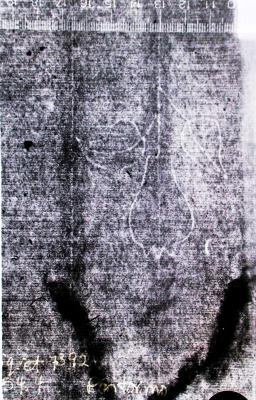

On the recto of this impressive red chalk drawing by Pontormo, two male nudes seated on a low wall peer out at some undisclosed object to the left of the viewer. The shallow foreground space is further inhabited by a third nude studio model, seen from the back standing with left arm akimbo and the raised right arm presumably supported by a pole. Although some of the naturalism instilled in Pontormo by his former master, Andrea del Sarto (see I, 30; IV, 14; and I, 31), pervades the standing model in particular, the drawing also exhibits much of Pontormo’s own eccentric grace. The heads of the figures are reduced to a simple oval or curve. Areas of shadow are indicated by partly rubbed or stumped chalk overlaid with parallel hatching. Stronger pressure was applied to the chalk to emphasize the smooth curves and sharp angles of the contours and prominent details, such as the bony ridges on the back of the man leaning forward and the hauntingly expressive deep eye sockets.
On stylistic grounds the drawing is usually dated to the period of Pontormo’s work on the decoration of the Great Hall in the Medici villa at Poggio a Caiano, a project on which he was engaged from 1519 to 1521 but then left unfinished. Though the completed lunette fresco of Vertumnus and Pomona also includes figures seated on a parapet, it is unlikely that the fresco and drawing are directly related. None of the figures correspond, and, furthermore, the sheet is more characteristic of a free exercise in life drawing than of a preparatory study. Philippe Costamagna associated the present sheet with a lost fresco of the arms of Cardinal Salviati supported by two putti that Pontormo painted in the courtyard of Filippo Spina’s house in Florence around 1517–18.1 The grouping, however, would be unusual for such a project. As noted by Janet Cox-Rearick, the drawing’s draftsmanship (and that of three other nude studies linked in style with it) is difficult to reconcile with the artist’s work before the frescoes at Poggio a Caiano. She also observes that Pontormo’s workshop practice makes it unlikely that he would transform the deliberate, almost academic poses of these model studies into putti, as with the spontaneously moving little boys seen in two paintings of arms with putti in his early work.2
The figure on the verso might have served as the study for a soldier in a scene of the Flagellation of Christ, although no such composition by Pontormo is known. Forceful darts in black chalk—with corrections in red chalk—map out the figure, and emphasis is placed on the modeling of the musculature of the back. The hair is probably tied in a kerchief like that of the seated models on the recto.
—REP
Footnotes:
- Costamagna 1994, 12n9; 139-41.
- E-mail from Janet Cox-Rearick, October 2005.
Watermark: Pear with leaves. Watermark, beta radiogrpah. Pear, stem, leaves.
Inscribed at lower left, in pen and black ink, "Jacopo da Pontormo"; at lower right, in pen and brown ink with A. J. Dezallier d'Argenville's inventory number, "334"; on verso, at lower left, in black, "2550"; beneath this, in pen and brown ink with A. J. Dezallier d'Argenville's inventory number, "335 (except for last digit mostly effaced)".
Watermark: Pear with two leaves (Briquet 7392: Lucca, 1516-1518), centered on chain line, fruit with leaves.
Baldinucci, Filippo, 1625-1696, former owner.
Dézallier d'Argenville, A.-J. (Antoine-Joseph), 1680-1765, former owner.
Reitlinger, Henry Scipio, former owner.
Calmann, Hans M., 1899-1982, former owner.
Rhoda Eitel-Porter and and John Marciari, Italian Renaissance Drawings at the Morgan Library & Museum, New York, 2019, no. 90.
Selected references: London 1953, no. 55; Scharf 1953, 352; Fellows Report 5 1954, 65-68; Grieg 1954, 132; Gamba 1956, 11; New York and elsewhere 1957, no. 86; New York 1959, no. 16; Berenson 1961, no. 2256 H; Cox- Rearick 1964, nos. 188 and 189; New York 1965-66, no. 76; Poughkeepsie 1968, no. 20; Kramer 1972, 79; Goldstein 1973, 135-37; Stampfle 1974, no. 4; Los Angeles 1976, no. 25; Cox-Rearick 1981, nos. 188 and 189; New York 1981, no. 18; Modena and Rennes 1990, under no. 21; In August Company 1993, no. 6; Costamagna 1994, 12n9, 139-41; Labbé and Bicart-Sée 1996, 97, nos. 334-35; New York 2006, no. 14; Munich 2008-9, no. 13.
Adams, Frederick B., Jr. Sixth Annual Report to the Fellows of the Pierpont Morgan Library. New York : Pierpont Morgan Library, 1955, p. 65-68.
Pierpont Morgan Library. Review of Acquisitions, 1949-1968. New York : Pierpont Morgan Library, 1969, p. 161.
From Leonardo to Pollock: Master drawings from the Morgan Library. New York: Morgan Library, 2006, cat. no. 14, p. 32-33.
100 Master drawings from the Morgan Library & Museum. München : Hirmer, 2008, no. 13, repr. [Rhoda Eitel-Porter]

